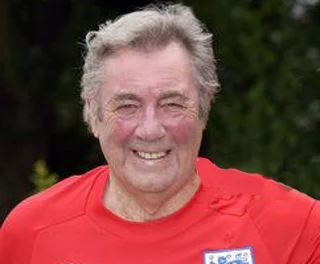Mostafa Ahmadi-Roshan was an Iranian nuclear scientist and university professor killed in a bomb blast near Gol Nabi Street, in north Tehran,[1]
in 11 Jan. 2012—a day after Israeli military chief Lt. Gen. Benny Gantz
was quoted as telling a parliamentary panel that "2012 would be a
critical year for Iran", in part because of "things that happen to it
unnaturally died he was 32.."[2] According to the semi-official Fars news agency, Ahmadi-Roshan (aged 32) was a graduate of Sharif University and supervised a department at Natanz uranium enrichment facility in Isfahan province.[1] According to that agency, he died after two assailants on a motorcycle attached magnetic bombs to his car.[3]
(Persian: مصطفی احمدی روشن, c. 1980 – 11 January 2012)
Citing the Fars News Agency, The Guardian reported that Ahmadi-Roshan was a chemistry expert specializing in "making polymeric membranes for gaseous diffusion, part of the process needed for the enrichment of uranium."[4] He was a deputy director for commercial affairs at Natanz uranium enrichment facility. The Fars News Agency reported that the driver of Roshan's car later also died in a hospital from injuries sustained in the explosion.[5]
Ahmadi-Roshan was one of several Iranian nuclear scientists assassinated in recent years. The Iranian government has blamed Israel and the US for the killings, the Iranian Atomic Energy Organization saying: "The heinous acts of America and the criminal Zionist regime will not disrupt our glorious path."[6]
U.S. Secretary of State Hillary Clinton categorically denied any United States involvement, stating: "I want to categorically deny any United States involvement in any kind of act of violence inside Iran".[7]
Israeli President Shimon Peres was quoted saying that, to the best of his knowledge, Israel was not involved in the hit.[8]
Several conservative newspapers in Iran called for retaliatory action against Israel. The daily Kayhan, supervised directly by the office of the Supreme Leader of Iran, wrote: "The Islamic republic has gathered much experience in 32 years, thus assassinations of Israeli officials and military members are achievable."[9][10]
Ahmadi-Roshan was buried on 13 January 2012.[11]
On 14 January 2012 Iran sent, via the Swiss embassy in Tehran, a diplomatic message to the United States government claiming that Iran has direct evidence of CIA's involvement in the assassination of Ahmadi-Roshan.[12]
Following his death, Ahmadi Roshan's wife stated to Fars News, "Mostafa's ultimate goal was the annihilation of Israel." She added that her spouse loved any resistance figure willing to fight the Zionist regime.[13]
Following the assassination the speaker of Israel's army said "we do not shed tears for this murder". According to Jerusalem Post commander of Israel's army stated a day before the attack that 2012 is going to be a critical year for Iran filled with un-normal events.[14]
A month after Ahmadi-Roshan's assassination, NBC News wrote:[15]
To see more of who died in 2011 click here
(Persian: مصطفی احمدی روشن, c. 1980 – 11 January 2012)
Citing the Fars News Agency, The Guardian reported that Ahmadi-Roshan was a chemistry expert specializing in "making polymeric membranes for gaseous diffusion, part of the process needed for the enrichment of uranium."[4] He was a deputy director for commercial affairs at Natanz uranium enrichment facility. The Fars News Agency reported that the driver of Roshan's car later also died in a hospital from injuries sustained in the explosion.[5]
Ahmadi-Roshan was one of several Iranian nuclear scientists assassinated in recent years. The Iranian government has blamed Israel and the US for the killings, the Iranian Atomic Energy Organization saying: "The heinous acts of America and the criminal Zionist regime will not disrupt our glorious path."[6]
U.S. Secretary of State Hillary Clinton categorically denied any United States involvement, stating: "I want to categorically deny any United States involvement in any kind of act of violence inside Iran".[7]
Israeli President Shimon Peres was quoted saying that, to the best of his knowledge, Israel was not involved in the hit.[8]
Several conservative newspapers in Iran called for retaliatory action against Israel. The daily Kayhan, supervised directly by the office of the Supreme Leader of Iran, wrote: "The Islamic republic has gathered much experience in 32 years, thus assassinations of Israeli officials and military members are achievable."[9][10]
Ahmadi-Roshan was buried on 13 January 2012.[11]
On 14 January 2012 Iran sent, via the Swiss embassy in Tehran, a diplomatic message to the United States government claiming that Iran has direct evidence of CIA's involvement in the assassination of Ahmadi-Roshan.[12]
Following his death, Ahmadi Roshan's wife stated to Fars News, "Mostafa's ultimate goal was the annihilation of Israel." She added that her spouse loved any resistance figure willing to fight the Zionist regime.[13]
Following the assassination the speaker of Israel's army said "we do not shed tears for this murder". According to Jerusalem Post commander of Israel's army stated a day before the attack that 2012 is going to be a critical year for Iran filled with un-normal events.[14]
A month after Ahmadi-Roshan's assassination, NBC News wrote:[15]
Deadly attacks on Iranian nuclear scientists are being carried out by an Iranian dissident group that is financed, trained and armed by Israel’s secret service, U.S. officials tell NBC News, confirming charges leveled by Iran’s leaders...U.S. officials, speaking on condition of anonymity, said the Obama administration is aware of the assassination campaign but has no direct involvement.
To see more of who died in 2011 click here










